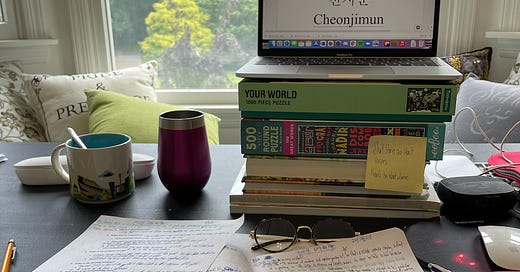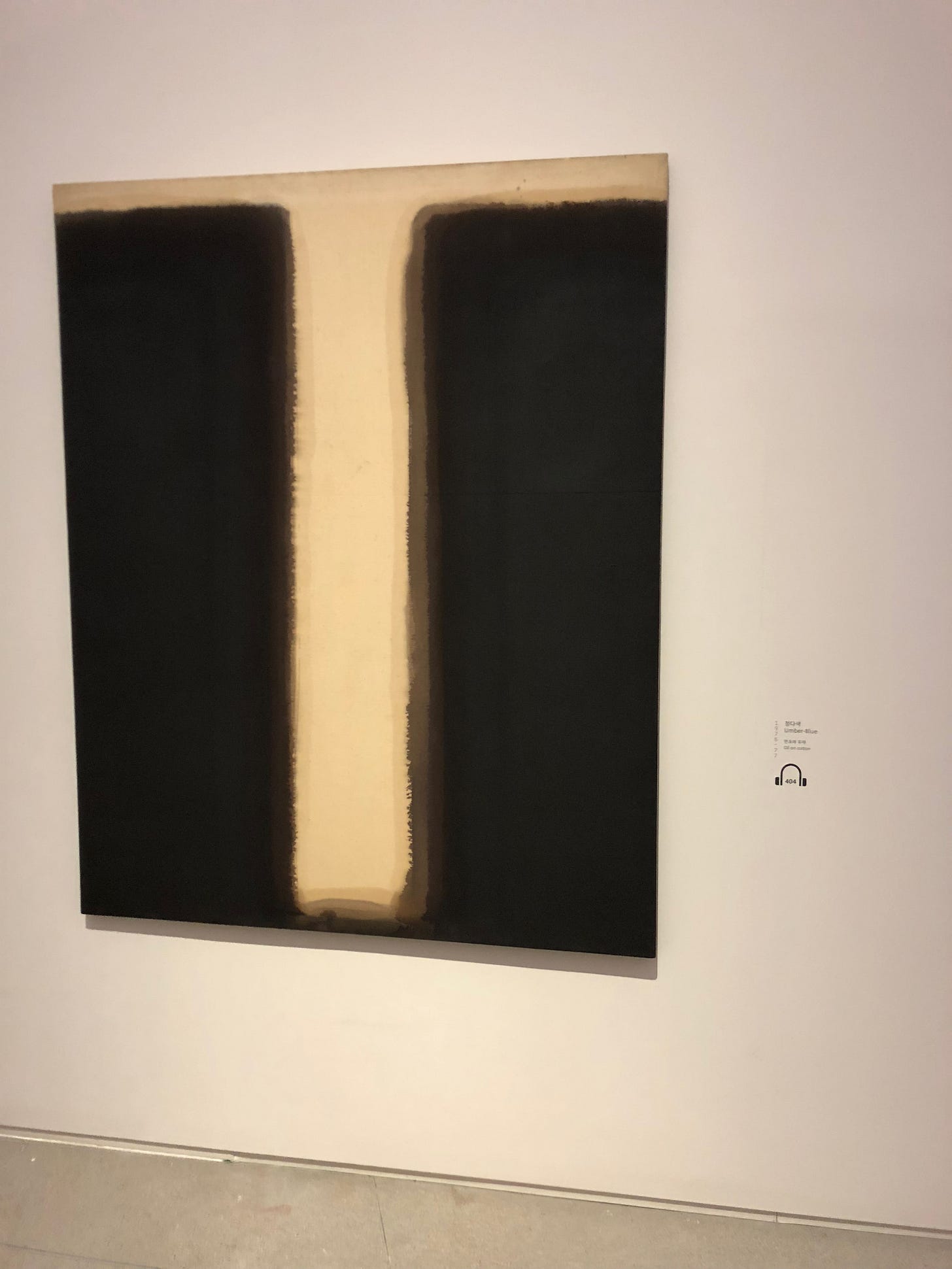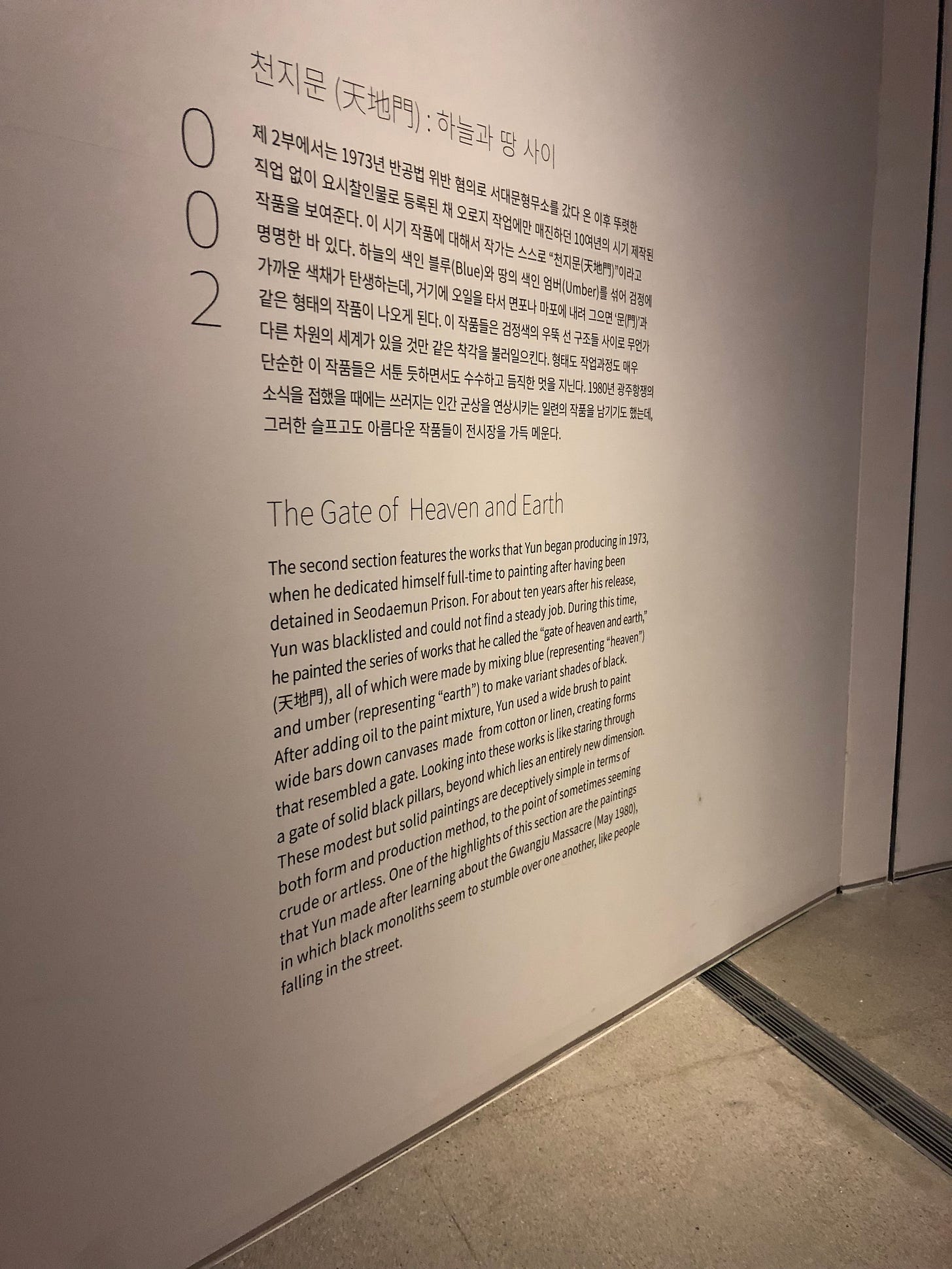I officially started the first draft of my novel, You Will Survive This, on June 1, 2021. Six drafts and twenty months later, my agent and I submitted the book to publishers. Today, we’re breaking down my drafting process and some writing practices that might help you streamline your own drafting process.
The Pitch
For context, here’s the latest pitch for my novel:
YOU WILL SURVIVE THIS follows Izzy Hayes, a Black folklore anthropologist in Seoul who falls in love with a thousand-year-old man. It is a story about love, loss, and living forever.
A lonely expat, Izzy spends her days studying Korean folklore and isolating herself from the world around her. While touring an art museum, she meets Kim Taejong, a strange, wildly wealthy man who takes a special interest in her work. Taejong flies Izzy out to Jeju Island for a research trip, and they stumble across a woman from his past. In an act of violence, Blanche—a survivor of Taejong’s former cult—reveals his secret: he’s spent the last thousand years cursed with immortality. Back in Seoul, Izzy agrees to help Taejong find a cure for immortality using her folklore research. But when she finds something that might actually work, she must choose between spending her life with the man she loves and giving his long life a well-deserved end. Alternating between the perspectives of Izzy, Taejong, and Blanche, the story complicates as Taejong wants to find peace in a permanent death immediately, Izzy wants him to stay alive for the remainder of her lifetime, and Blanche wants to kill Taejong to take his eternal life for herself.
Using immortality as a lens to explore love, loss, and what it means to be alive, YOU WILL SURVIVE THIS has the magical realism of Jesmyn Ward’s Sing, Unburied, Sing, the dynamic setting of Frances Cha’s If I Had Your Face, and the tone and style of Claire Vaye Watkins’ Gold Fame Citrus.
Want to learn how to write a concise pitch for your own novel?
Check out my post on how to write a query letter.
Draft 1
Stats
Goal: Write a 50,000-word first draft
Schedule: 30 days, 1667 words per day
Timeline: June 1, 2021 to June 25, 2021
Audience: Myself and only myself
Process
I started the first draft of YWST in June 2021, but it’s important to mention that I first got the idea for the book in December 2018. At the time, I was touring the Yun Hyong-keun Retrospective at the National Museum of Modern and Contemporary Art in Seoul. Amid the paintings in Yun’s The Gate of Heaven and Earth series, I stood before Umber-Blue (1976), and the opening scene of the novel, the moment when Izzy and Taejong first meet, came to me in an instant, complete and fully formed. When I sat down to write the scene a few weeks later, it flowed so easily that it didn’t feel like writing; it felt like taking dictation.
At the beginning, the early drafts of the story centered around the movement of this painting and its meaning to the main characters. For this reason, the novel was originally titled, 천지문 (Cheonjimun), a portmanteau of the words heaven, earth, and gate, which was ultimately translated to English as The Gate of Heaven and Earth.
However, at the time, I was still working on another book, so I couldn’t fully dive into YWST yet. But between December 2018 and January 2021, I wrote the first 30 pages of the book. By May 2021, I had just graduated from my MFA program, and I was ready to start YWST in earnest. While I was finishing up my MFA, I signed an MOU with a hagwon in Korea to start teaching in November, and I had saved up enough money that I could afford to be unemployed for the next six months. I knew that this could possibly be the last time in my life that I could write “full-time” (read: be comfortably unemployed), so I wanted to use my time wisely.
I decided to write the first draft of my novel NaNoWriMo-style during the month of June, workshop the first forty pages at the Sewanee Writers’ Conference in July, and revise to turn the draft in to my agent by early November.
In the end, I finished my first draft as planned in June.
Here’s a list of what worked for me and what I wish I’d done differently while working on this draft.
What Worked
Fast drafting
Not editing as I wrote
If self-editing is counterproductive to your writing process, check out this post for tips on how to stop editing as you write.
Doing a 3-2-3 work day
Three hours writing in the morning
Two hours reading during lunch
Three hours writing in the late afternoon
Again, I want to acknowledge the fact that this work schedule was a privilege because I could afford to be unemployed. But I bring up this schedule because if you ever have unstructured writing time from a fellowship, residency, or your own savings, I recommend using this schedule to stay productive. I treated writing like a full-time job, working eight hours a day. I also scheduled my reading time to both recharge my brain and inspire me for the second writing session.
While working on my first draft, I read Severance by Ling Ma and A River of Stars by Vanessa Hua. Both books are absolutely brilliant. Severance is excellent if you’re interested in world building or a non-linear structure. A River of Stars is perfect if you’re looking for an example of plot-driven literary fiction.
What I Wish I’d Done Differently
Wrote the pitch letter before drafting
For more on the logic behind this practice, check out my post on what I wish I knew before querying agents.
Outlined before drafting
At the time, I still mostly identified as a discovery writer, but I struggled a lot with the second act while I was drafting. I ended up having to stop, study craft, and outline anyway. I just wish I had done that from the jump.
Now that my book is officially on sub, I’ll be diving into best practices for revision and how those practices change draft to draft. Next week, we’ll talk about strategies for writing a second draft.
How do you approach writing a first draft? What writing rituals help you have a productive writing session? Let’s share our writing practices in the comments:
Until next week,
Kat







I’m deep into a revision that’s so extreme it might as well be a first draft. I started with a new pitch, moved on to a beat sheet for structure, expanded the beat sheet to 40 scenes--and started drafting. Along the way, I’ve mostly abandoned the 40 beats--too much wishful thinking, not enough character-driven plotting. I’d love for the draft to move faster, but every time I pick up the writing pace, I lose the character’s voice. So--now slogging through a swampy middle. I push forward by dictating/telling the story to myself (using the microphone/voice to text in Pages) in the voice of the protagonist, with a emphasis on how he’s feeling. How’s it going? Better than nothing!
Thank you for sharing your experience with us, Kat. It helps keep me moving forward. I am in full stagnation mode right now. Other things in life are taking up more brain and creative space than I have for everything. I want to write, but every time I sit down some other shiny thing distracts me. My writing is primarily for ME, so when I have responsibilities or things I want to do for OTHERS I do those first and am often left with a nearly empty creative bucket at the end of the day. I have had a few glimmers of inspiration, but usually when I'm half asleep and promise myself I'll remember them in the morning, and we all know how that goes.
Anyway...I do have a question that isn't exactly about drafts, but maybe for a future AMA.
How do you feel about prologues? I have never written one, but I am wondering if it might be a good idea for this particular story. I'm not sure, but I had made the decision to tell this story only from the protagonist's POV, but my antagonist is more interesting. He's wittier, he's manipulative and doesn't even realize it, and I enjoy him. I feel like I need more of his voice. So I thought about a prologue from his POV...or maybe I'll just tell the story from both POVs. That thought has been bubbling and I keep pushing it down, and I think it's part of my stagnation. Anyway. That's where I'm at.